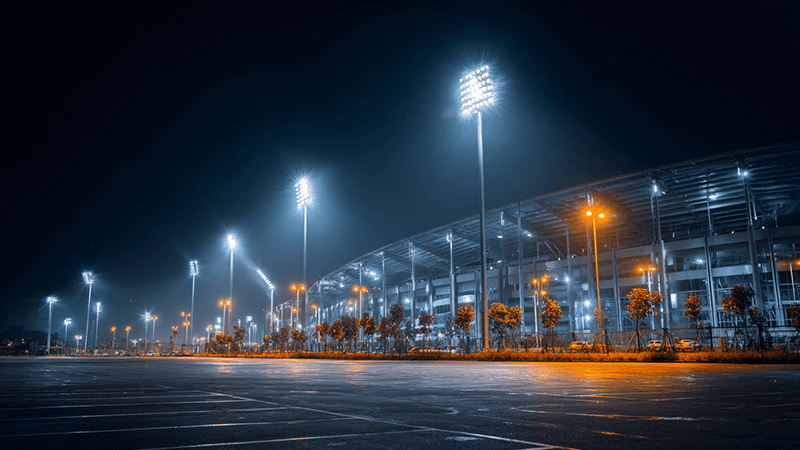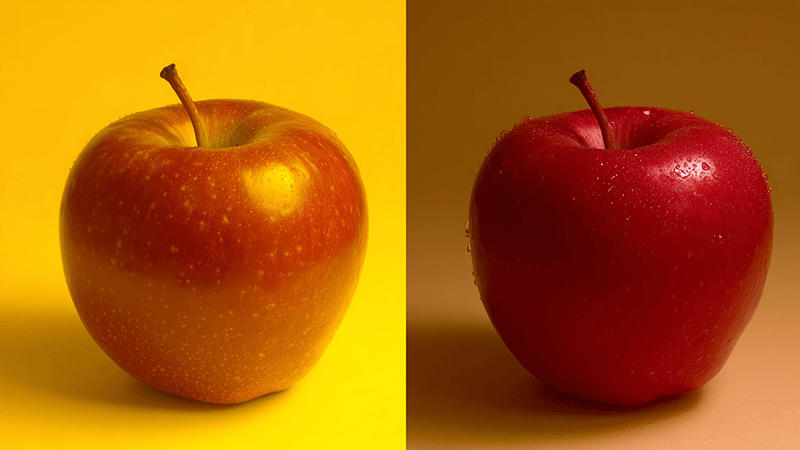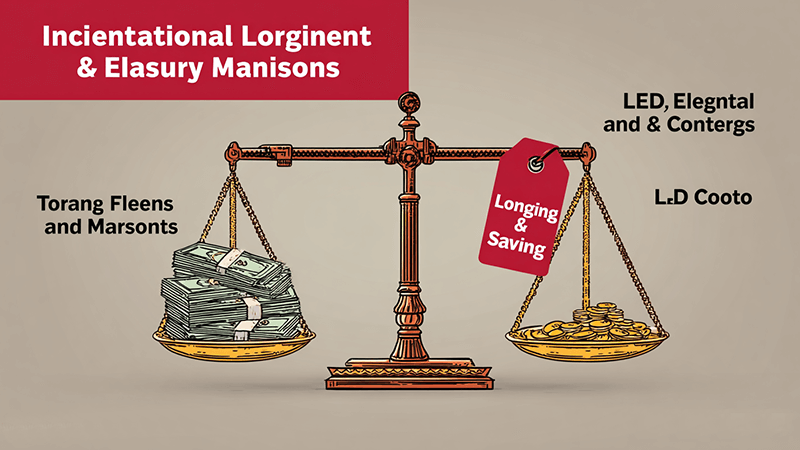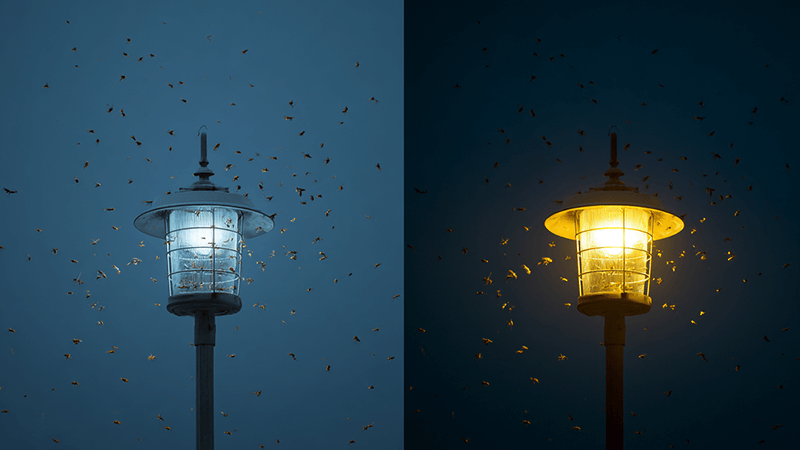Last Updated on: September 8, 2025Choosing the right floodlight feels complicated. Traditional options are cheap, but are they secretly costing you with poor performance, high energy bills, and constant maintenance? It’s a frustrating trade-off.
The main differences are in light quality, control, efficiency, and lifespan. LED floodlights provide superior, true-to-life color (high CRI), instant smart control, and last up to 10 times longer while using 70-80% less energy than traditional high-pressure sodium or metal halide floodlights.

I’ve been in the lighting business for over a decade, starting on the factory floor and now running my own manufacturing company, Upward Lighting. I’ve witnessed the complete shift from traditional lighting to LED technology firsthand. The change is about so much more than just saving on your electricity bill. The real advantages are in the quality of the light and the control you gain. Let’s break down what truly separates them, so you can make a choice that benefits your projects for years to come.
What’s the True Difference in Light Quality and Control?
You light up a car park, but under the ugly yellow glow, you can’t tell a blue car from a black one. This isn’t just unattractive; it can be a security issue.
The core difference is that LED floodlights render colors accurately and offer instant, precise control. Traditional lights like High-Pressure Sodium (HPS) produce low-quality, color-distorting light and have slow warm-up times, while LEDs give you true-to-life colors and instant-on smart capabilities.

When I talk to clients like Shaz, a purchasing manager in the UAE, the conversation often starts with price but quickly moves to performance. The ability to see things clearly and control the environment is what makes a project successful. This is where the technology gap between old and new becomes most obvious.
The Secret of Color: CRI and R9
The biggest failing of many traditional floodlights is their Color Rendering Index, or CRI. Think of CRI as a measure of how accurately a light source shows an object’s true colors, on a scale of 0 to 100.
High-Pressure Sodium (HPS) lights, the ones that cast that intense yellow-orange glow, have a terrible CRI, often just 20-30. Under this light, everything is distorted. It doesn’t "render" color; it just "illuminates" shapes. Metal Halide (MH) lamps are better, with a CRI usually over 70, but they come with their own problems.
This is where LED lights are in a different league. A standard-quality LED floodlight will have a CRI over 80, which is great for most applications. At Upward Lighting, we produce premium models with a CRI over 95. This means colors appear vibrant and exactly as they should. For a retail storefront or a sports stadium, this is a massive advantage. For an even deeper look at quality, I advise looking at the R9 value, which measures how well a light renders deep red tones. A high R9 is a mark of a truly superior LED.
The Power of Instant Control
Imagine a brief power flicker at a sports field lit with old Metal Halide lamps. The game would have to stop for 10-15 minutes because MH lamps require a cool-down period before they can be re-ignited. This is a fatal flaw for any application needing reliable, instant light.
LEDs are semiconductors. They turn on and off instantly, with zero delay. This makes them perfectly compatible with motion sensors for security lighting or sophisticated control systems for architectural lighting. This is LED’s secret weapon. You can achieve smooth, 0-100% dimming without any flicker or change in color quality. You can even program them to change through millions of colors to create dynamic scenes—something traditional light sources could never do.
| Feature |
High-Pressure Sodium (HPS) |
Metal Halide (MH) |
LED |
| Color Rendering (CRI) |
20-30 (Very Poor) |
70-85 (Good) |
80-95+ (Excellent) |
| Start-up Time |
3-5 Minutes |
2-5 Minutes |
Instant |
| Re-strike Time |
1 Minute |
10-15 Minutes |
Instant |
| Smart Control |
Very Limited / None |
Limited |
Full (Dimming, Color) |
Are LED Floodlights Really Worth the Investment?
The upfront cost of LED floodlights often looks high compared to traditional ones. This price difference makes you pause and wonder if you’re overspending on something new and fancy.
Absolutely. The higher initial cost is quickly recovered through massive energy savings, almost zero maintenance, and a much longer lifespan. An LED floodlight is not an expense; it’s a long-term investment that lowers your total cost of ownership and delivers far better performance.

Whenever a purchasing expert like Shaz asks me about the return on investment, I tell them to look beyond the initial invoice. The true cost of a light fixture isn’t just what you pay for it; it’s what you pay to run it and maintain it over its entire life.
Beyond the Price Tag: Lifespan and Durability
The biggest enemy of an LED is heat. The lifespan and light output of an LED chip are tied directly to how well heat is managed. I’d say 80% of an LED floodlight’s quality comes down to its thermal design. Cheap, low-quality LEDs often use thin plastic casings or undersized aluminum parts. Heat builds up, and the light gets dim very quickly—a process called lumen decay.
High-quality LED floodlights are built differently. They use large, heavy, die-cast aluminum housings with deep fins that act as a heat sink, pulling heat away from the sensitive electronics. When you pick one up, you can feel the quality. I always tell my clients that a heavier LED floodlight is often a good sign; it means the manufacturer invested in a proper thermal management system to ensure a long, reliable life of 50,000 hours or more. In contrast, traditional lamps not only have a short life (5,000-15,000 hours) but can also be fragile. They contain high-pressure gas and carry a small risk of bursting, which is why they often need protective shields.
The Efficiency Equation: Light Where You Need It
Traditional floodlights create light in all directions and then use a big, bulky reflector to try and aim it forward. This process is very inefficient. A lot of light gets trapped inside the fixture or spills out sideways as glare and light pollution.
LEDs are directional by nature; they emit light in one direction. We then use advanced secondary optics—precision-molded lenses—to shape that light and direct it exactly where it’s needed. We can create very narrow spot beams to light up a flag or wide flood beams to cover a parking lot, all with minimal waste. This optical efficiency means that every watt of energy is put to good use, making LEDs even more efficient than the wattage numbers alone suggest. A 150W LED can easily replace a 400W metal halide fixture and provide better, more uniform light.
| Feature |
Traditional Floodlights (MH/HPS) |
LED Floodlights |
| Lifespan |
5,000-20,000 hours |
50,000-100,000+ hours |
| Energy Savings |
Baseline |
60-80% Less |
| Maintenance |
Frequent bulb/ballast replacement |
Virtually None |
| Durability |
Fragile bulbs, sensitive to cold |
Solid-state, very durable |
| Heat Sink |
Not a primary design factor |
Critical for quality and lifespan |
How Do You Replace Traditional Fixtures with LED Floodlights?
You’ve decided to upgrade, but now you’re facing the old fixtures and wondering what to do. Retrofitting can seem complex, and you’re worried about making a costly mistake with wiring or selection.
To replace a traditional fixture, focus on matching the lumen output, not the wattage. Select an LED with an equal or greater number of lumens, then check that the voltage and mounting type are compatible. It’s often a simple one-for-one swap that an electrician can do easily.

I’ve helped countless contractors and project managers through this process. It’s much simpler than it looks if you follow a couple of basic steps. The biggest mistake I see people make is trying to match the power consumption.
Step 1: Matching Lumens, Not Watts
The most common error is replacing a 400W traditional light with a 400W LED. This will result in a space that is blindingly bright and a huge waste of money. LED technology is far more efficient at turning watts into light (lumens). The key is to look at the lumen output of your existing fixture and choose an LED that matches or slightly exceeds it. For example, a typical 400W Metal Halide produces around 36,000 lumens. You can achieve this same light output with a high-quality 150W LED floodlight. Always ask your supplier for a "cross-reference" or "equivalency" chart.
| Traditional Wattage |
Typical Lumen Output |
Equivalent LED Wattage |
| 100W HPS |
~9,500 lm |
30W-50W |
| 250W MH |
~20,000 lm |
80W-100W |
| 400W MH |
~36,000 lm |
120W-150W |
| 1000W MH |
~80,000 lm |
300W-400W |
Step 2: Checking the Mechanicals and Electricals
Once you know the right lumen package, you need to check a few simple things. First, look at the mounting. Most old floodlights use a U-shaped bracket (yoke mount) or a slip-fitter that goes over a pole tenon. At Upward Lighting, we design our floodlights with versatile mounting options to make these swaps easy. Second, check the voltage. Many modern LEDs, including ours, are designed with a wide input voltage range (e.g., 100-277V AC) to accommodate different electrical systems, but it’s always critical to confirm. Finally, consider the beam angle. Are you replacing a fixture that was lighting a tall facade (narrow beam) or a broad open area (wide beam)? Good LED suppliers can provide the same fixture with different lens options to replicate the original lighting plan, only better and more efficiently.
Do LED Floodlights Attract Fewer Bugs?
You install beautiful new outdoor lights, but soon they are covered in a swarm of bugs. It’s annoying, messy, and a constant chore to clean the fixtures.
Yes, LED lights attract significantly fewer bugs. Most insects are drawn to the ultraviolet (UV) light that traditional bulbs emit. LEDs produce almost no UV light. Choosing an LED with a warm color temperature (yellowish light) makes them even less attractive to bugs.

This is one of those unexpected benefits that my clients love. A customer with a lakeside restaurant was constantly dealing with bugs swarming their outdoor dining patio. It was a huge problem for their business. The solution was surprisingly simple and highly effective.
The Science of Attraction: Light Spectrum
Insects, especially moths, navigate by natural light sources like the moon. They are most attracted to light from the shorter end of the spectrum, which includes ultraviolet (UV), violet, and blue light. Traditional light sources like mercury vapor and metal halide lamps are rich in UV and blue wavelengths, making them powerful "bug magnets." You can see this on any summer night—the lamp is surrounded by a chaotic cloud of insects.
Standard LED lights are a massive improvement right away because they produce virtually no UV radiation. This alone drastically reduces their appeal to bugs. However, the color of the visible light still matters.
Choosing a "Bug-Resistant" LED
While LEDs don’t emit UV, the color of the white light can still be a factor. "Cool white" LEDs, which have a higher color temperature (e.g., 5000K), have a stronger blue component in their light spectrum. This can still be attractive to some insects.
For areas where bugs are a real nuisance, the solution is to choose LEDs with a "warm white" color temperature (3000K or 2700K). These lights have much less blue and more yellow and red tones, which most flying insects can’t see well. For the lakeside restaurant I mentioned, we took it a step further and installed 2200K "amber" LED floodlights. The results were immediate and dramatic. The bug problem around their patio almost completely disappeared overnight, transforming the dining experience for their customers.
| Light Source |
Key Wavelengths |
Bug Attraction Level |
| Mercury Vapor |
High UV, Blue |
Very High |
| Metal Halide |
High UV, Blue |
High |
| Cool White LED (5000K+) |
Blue, Green |
Medium-Low |
| Warm White LED (2700K-3000K) |
Yellow, Red |
Low |
| Amber LED (~2200K) |
Yellow, Orange |
Very Low |
Conclusion
Upgrading to LED floodlights is the clear choice. They offer superior light quality, unmatched control, huge cost savings, and are even better for reducing light pollution and pesky bugs.